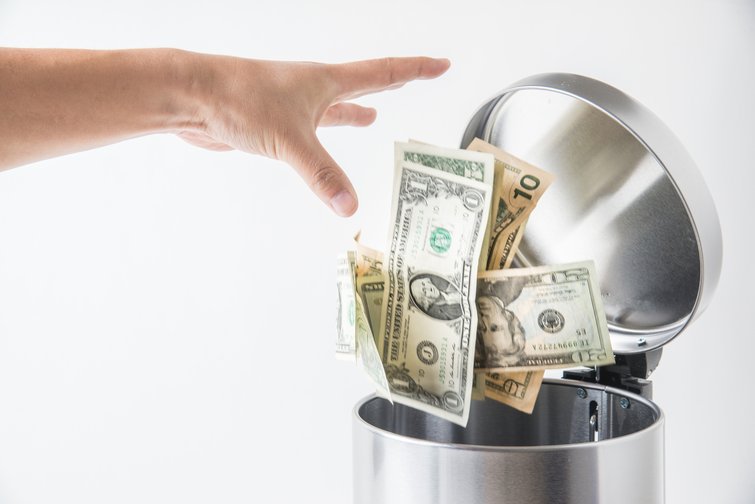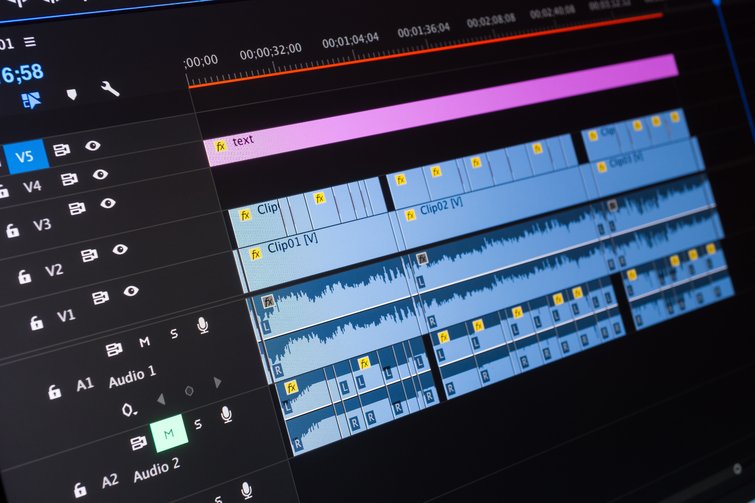
One Year After Giving up Premiere Pro for DaVinci Resolve
Here’s everything I’ve learned about switching to a new NLE—the good, the bad, the unexpected, and the humbling.
It’s been about a year since I made the leap from Adobe Premiere Pro to DaVinci Resolve, and now I’m ready to share some hot, steamy takes. As you’ll see, there are things about Resolve that I can’t believe I once lived without. At the same time, there is much I miss about Premiere. Ultimately, as an experience, it’s been both thrilling and humbling.
Before we go any deeper, though, hear me out—I was never really a Premiere Pro Expert™ to begin with, nor am I currently an expert at DaVinci Resolve. In fact, what I am is a perfectly average video editor. Some days I feel a bit above average, some days a bit below. But, either way, I treat every day as a chance to get a little better.
I’m certain many of you relate to this self-assessment. If so, then hopefully this look at my journey will give you a pretty good idea idea of what to expect should you ever decide to make an NLE change.
Why Did I Make the Switch?

I could wax poetic here about how and why my needs weren’t being met. How I was evolving beyond Premiere, growing as a colorist, and wanting to expand my horizons. Really, though, my choice came down to three things.
The First Thing: As a long-time writer for the blog, I was exposed to Lewis McGregor’s many Resolve musings. While watching those finely crafted tutorials and reading those in-depth articles, I found myself appreciating and becoming curious about Resolve’s capabilities as a do-it-all software. It seemed fun.
The Second Thing: I bought a BMPCC6K. When you purchase a Blackmagic Design product, you get Resolve Studio for free. So, I figured, well, why not?
The Third Thing, filed under “R” for Real Talk: After the pandemic put me out of a job, the monthly Premiere bill started taking a toll.
When I looked at these three things all together, there was definitely, for lack of a fancier word, a vibe. I was feeling less and less enchanted by Premiere due to Adobe’s pricing structure. At the same time, I couldn’t shake the feeling that Blackmagic Design (as a company) simply cared more about its customers. However it all sounds—silly, biased, whatever—it’s where I was. Moving on.
What I Love About Resolve
The Editor/NLE relationship is a complicated one, a thing of wild highs and lows that fluctuate on a project-by-project basis, often in relation to creative energy, technical aptitude, and client attitude.
I do not love Resolve. I do not hate Premiere. You can’t really love a program, and, thanks to the number of other options, there’s no value in actively hating one. You can only really enter into an understanding with an NLE—let’s meet each other where we’re at, just as we are, and try to make this relationship work as long as we can, dang it.
All of that said, I feel like it’s working out pretty well with Resolve; I’ve grown comfortable with almost every aspect of it. Basic cutting, working with the timeline, piecing together edits, it’s all a breeze. Sure, there are small critiques: The Magnet tool is kind of infuriating to work with, as it lacks the nuance and intuition of Premiere. But, I digress.
Also, after a year in, I’m pretty over the moon with the color page. I had been eyeing it with excitement in the last days of my Premiere Era, seeing it as a possible challenge that could usher in the next phase of my career. After watching countless tutorials about using nodes and playing with images in ways I never felt comfortable with in Premiere, the color page ended up playing a big part in the decision to switch.
The best thing I can say or pitch about Resolve’s color page is that it’s an actual dedicated space for color grading, designed specifically to help you get to the finish line while producing the best images possible.
My favorite things about Resolve:
- The dedicated color page is so well designed and organized, it’s the most user-friendly experience ever.
- Nodes are a good thing. They’re new and different, but they make more sense and give you a better understanding of what you’re doing.
- Stabilization in Resolve is far superior to the Warp Stabilizer tool in Premiere.
- The Magic Mask tool for coloring is mind-blowing. Put it alongside Resolve’s tracking capabilities, and you’ve got the most substantial one-two gut punch in all of color grading.
Learning Curve
While learning a new program can be daunting, Resolve is no Blender. It’s not even After Effects. The learning curve is gentle, and I had a general understanding of what I was doing pretty quickly.
Of course, there were some growing pains. With Premiere, I was confident. There was muscle memory involved. I knew where stuff was and what stuff did. Climbing into Resolve, well, it was humbling. Sometimes, it felt like I was holding in a sneeze as I’d slowly move around the program looking for simple effects and tools to use.
Indeed, simple tasks that were second nature in Premiere turned into early roadblocks in Resolve. You want an ego check as an experienced video editor? Put yourself in a position where a complete work stoppage can only be solved by typing “how to add titles” into a search engine. Oof.
However, things really started turning around thanks to the magic of online tutorials. Got a question about where something is? YouTube for the win. I included the video above this section because, not only is it a good example of what’s possible within Resolve, it’s also a perfect example of how much you can learn from thoughtful content shared by experienced users on YouTube.
If you think about it, videos like this one act as the cogs of a beautiful perpetual improvement machine powered by people who pay knowledge forward. Someone watches a video about how to get better with video tools. As such, they get better at using those video tools, so they use those video tools to help others get better at using those video tools.
That neverending community-based cycle is helping push the medium and the artform to new heights. So much so, that I believe we are experiencing something of a renaissance right now. It’s just never been easier to grow as a creator—or switch NLEs.
What I Miss About Premiere

Premiere’s interface, user experience, and tools have been so fine-tuned that it’s a well-oiled machine. For all of its shortcomings, it’s still, you know, Premiere Pro—a true titan that will be around forever. And, admittedly, there are things I miss about it.
In terms of organization and overall user interface, Premiere is extremely modular, and it allows you to place things wherever you want. Resolve isn’t, and you’re kind of locked into the preset layouts it offers.
Also, I guess it’s time to talk about After Effects. Specifically, about how I still use After Effects because I haven’t switched to Fusion—even though the workflow of moving back and forth between Resolve and AE is anything but easy. Maybe I’ll tackle Fusion someday. I don’t know how it will shake out, if only because I don’t know anyone who uses Fusion exclusively.
Finally, I also miss the Essential Graphics Panel in Premiere because I used it all the time with pre-built mographs that I could just throw onto my project, no problem. I genuinely think that was one of Premiere’s best features, and I miss it dearly.
In Conclusion
When switching up programs, the best piece of advice I can give is this: Expect the unexpected. You’re going to run into questions you might not even think to ask. You might also end up really not vibing with your new NLE, and that’s okay. If you’re not feeling it, you’re not feeling it.
The best news? All of these programs are actually pretty awesome and can pretty much do whatever we, as video editors, need in 2021. Just like cameras, we’ve hit a sweet spot, and it only seems to be getting better. Good luck, and have fun.
You like articles about video editing? Same here. Check these out:
- The Complete Video Editors Guide to Working with Music
- How Video Editors Can Increase Production Value Using Song Stems
- The Power of the Match Cut Sequence in Your Video Edit
- Editing Tips: Sorting Footage and Creating Quality Timelines
- Why Adobe Doesn’t Want You Using Older Versions of CC
Cover image via StockLite.




